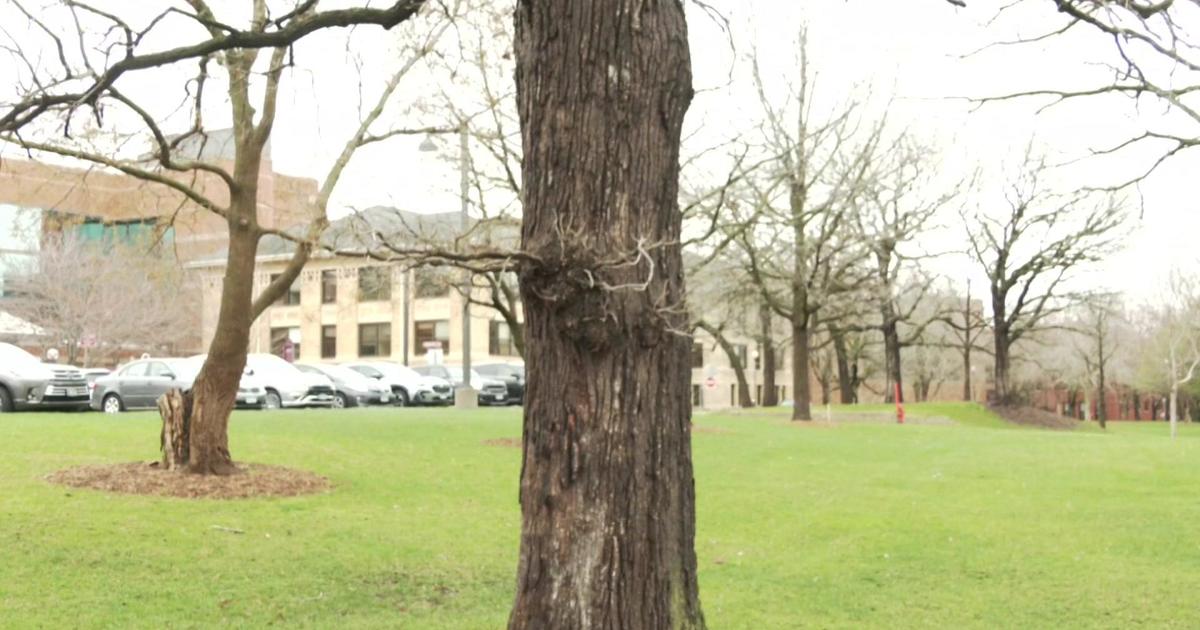Spring Fieldwork Off To Late Start In Minnesota
MINNEAPOLIS (AP) — Spring fieldwork is getting off to a late start because of winter's stubborn grip on Minnesota but farmers say their yields shouldn't be hurt as long as they can get into their fields soon after Easter.
Rod Jorgenson saw a fresh dusting of snow as he looked out over his corn and soybean fields near Kasson in southeastern Minnesota on Monday. But spring fieldwork has barely begun across the region. And this week's forecast calls for below-normal temperatures with the possibility of more snow Wednesday or Thursday. Yet southern Minnesota is rapidly approaching the traditional start of its ideal period for planting corn.
"The calendar says it should be right around the corner. When we look out the window, that looks like something different," Jorgenson said.
In its weekly crops progress and condition report for Minnesota, the U.S. Department of Agriculture said Monday that a statewide average of less than half a day was suitable for fieldwork last week, but much of the state saw a decrease in snow cover and the amount of ground frost fell rapidly in some areas. In some ways it's a replay of 2013, which also got off to a slow start. A cold, wet spring followed by drought led to below-average yields.
"There's been very little fieldwork done," said Ryan Miller, regional crops educator for the University of Minnesota Extension service in Rochester. "There are some people who've managed to successfully put on some manure this spring but by and large things have been at a standstill."
High temperatures aren't expected to bounce back to 50s until Easter weekend, Extension climatologist Mark Seeley said, but he noted that the chilly forecast follows five or six days of above-normal temperatures last week.
"Many southern Minnesota counties lost all their soil frost, which was a good sign," Seeley said. "Unfortunately we're going to be 10 to 15 degrees colder than normal this week, which is going to put the brakes on. Soil temperatures haven't warmed to the point where we would want to give the green light to planting yet. They're still quite cold."
Producers probably won't be able to begin fieldwork in earnest until around April 25-30. Seeley said.
The optimal window for planting corn is usually April 25-May 7 in southern Minnesota, Extension corn agronomist Jeff Coulter said. But he added that producers usually can delay planting until mid-May with no yield reductions.
Most farmers still need to apply fertilizer and make one pass with a field cultivator to loosen the soil before planting, though, which means some hectic workdays ahead and a fieldwork schedule that will get further compressed if it turns rainy.
"The calendar is kind of slipping by a bit but I'm optimistic it could be a good year. ... As long as we can get the majority of our corn planted by mid-May it will have very high yield potential," Coulter said.
Minnesota farmers plan to plant 8.6 million acres of corn this spring, unchanged from 2013, according to a USDA report two weeks ago. If producers stick to those plans, it would be Minnesota's second-largest corn acreage planted, just 150,000 acres less than the record of 8.75 million in 2012. They also intend to plant 7.4 million acres of soybeans, up 10 percent from last year, which would be the state's second-largest soybean acreage planted, just 100,000 below the record of 7.5 million in 2003.
In southwestern Minnesota, Gary Wertish is feeling optimistic even though he hasn't begun preparing his corn and soybean fields near Renville yet. The snow is gone and his soil is dry.
"A month ago we wondered if the spring would ever come, but it's changed dramatically. I think the last week of April we'll be seeing a lot of fieldwork," he said.
Wertish said dry soil is his main concern. Most of southwestern Minnesota remains in a moderate drought after a fairly dry 2012 and 2013. He had decent yields, though not bumper crops, thanks to some timely rains. He's hoping for some good precipitation this spring to recharge his subsoil moisture — after he's done planting.
"As a farmer you're always optimistic it's going to be a good year. That's why you farm. Even if it doesn't look likely to pay to put in a crop, you still do," Wertish said.
(© Copyright 2014 The Associated Press. All Rights Reserved. This material may not be published, broadcast, rewritten or redistributed.)



